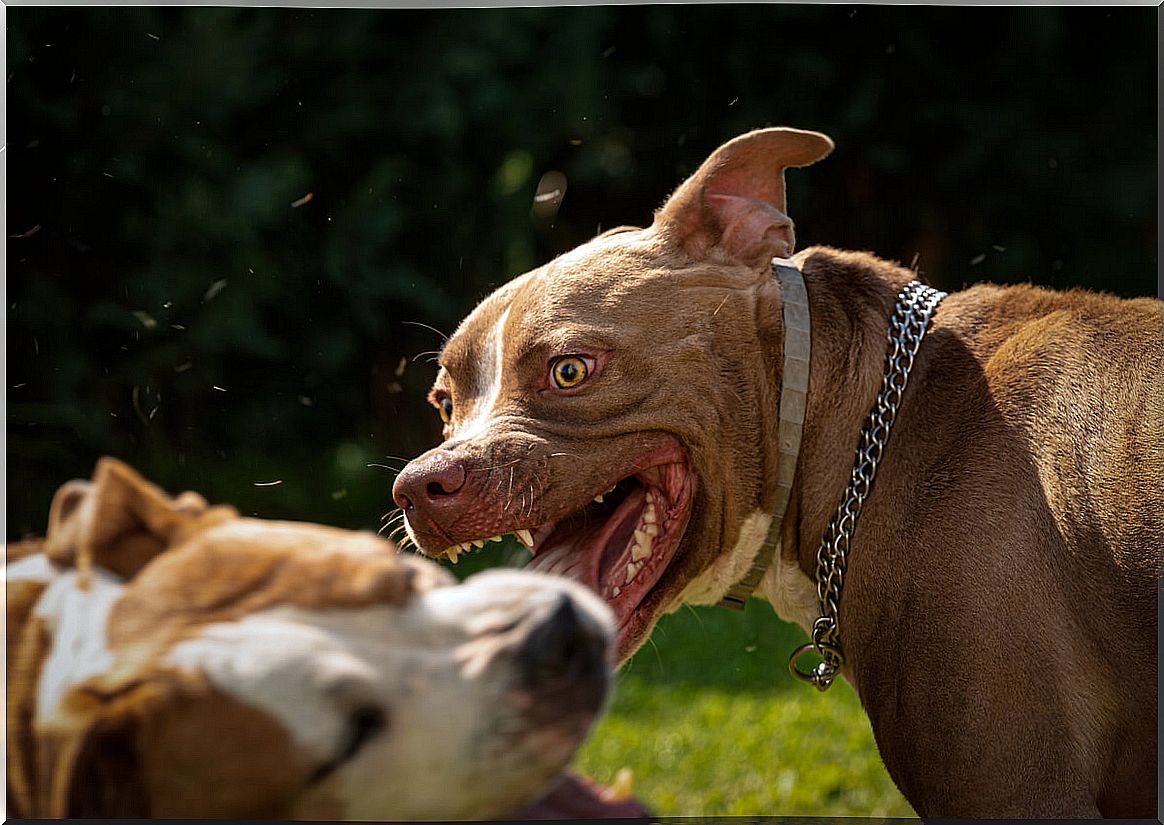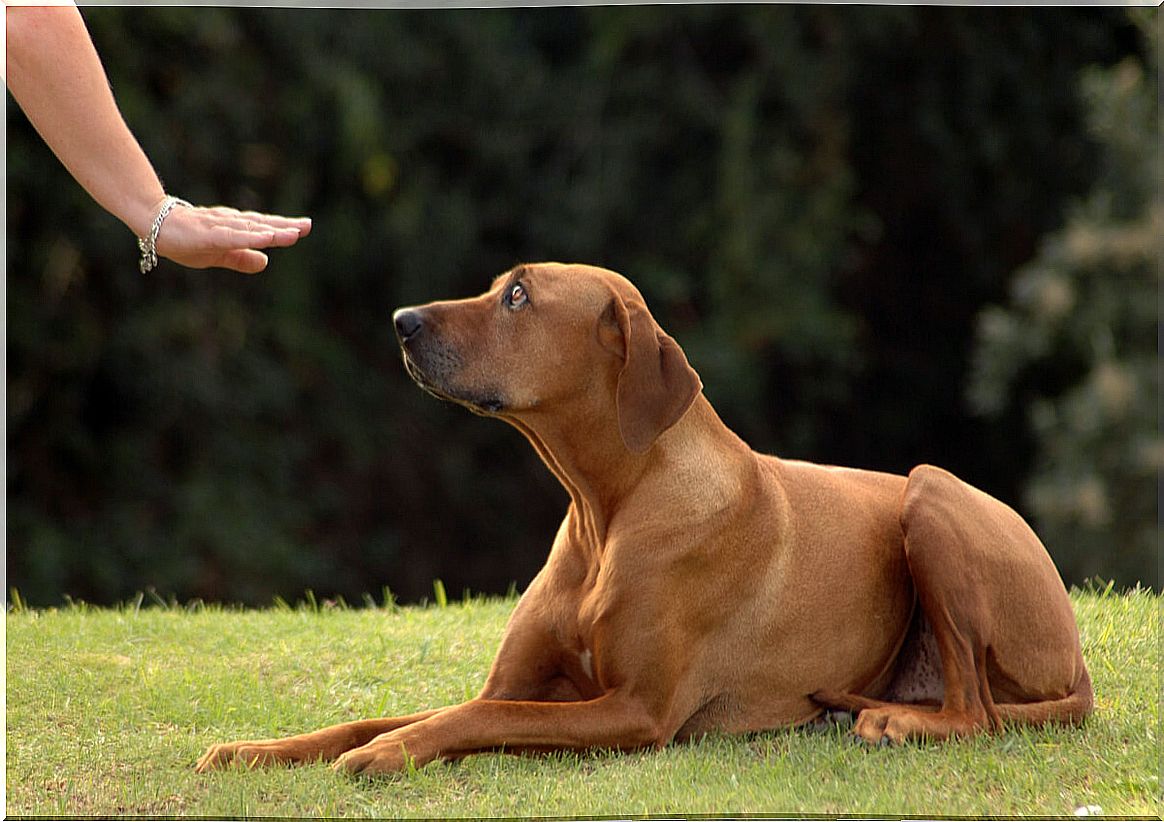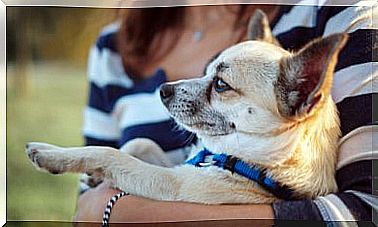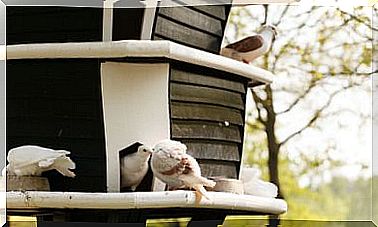The 6 Most Common Behavior Disorders In Dogs

The company of dogs, the domestic animals par excellence, is one of the best things that can happen to us in life. However, like everything else, learning to live with them and understand them properly is essential to avoid the appearance of so-called behavior disorders in dogs.
Everyone has encountered some difficulty in the field of canine education. If you are interested in the subject, here we briefly tell you about some of the behavioral problems in dogs that could be a reason to go to a specialist.
The behavior of dogs
It goes without saying that every dog, like every human or non-human animal, has its own personality. Behavioral tendencies derived from genetics or race are nothing more than a modifiable and variable basis.
To put a context, we are going to give a few touches to the behavior of dogs as a species in the following list:
- They are gregarious animals: dogs live in groups, either with humans or with other dogs. They are expected to display social behaviors and seek the tutor’s company regularly.
- They are hierarchical: within the group, there are dominant and submissive individuals, so it is important to know the signs that indicate either of the two attitudes.
- They can be territorial: especially uncastrated males, the normal thing is that they need their space and mark it.
- They need a series of essential care for their well-being: unlike other species, dogs need to go out, environmental enrichment, education and other things that make them relatively dependent on the guardian.
- Smell is a big part of their sensory world – losing their sense of smell can be worse for a dog than sight or hearing. This sense can be part of the causes of some conduct disorder in dogs.
Six behavioral disorders in dogs
After this brief introduction to the character of these canids, here are some of the most common behavior disorders in dogs. Any of them can be a reason to visit a specialist, so don’t miss out.
1. Aggression
Aggression in dogs is one of the first reasons for abandonment in dogs aged two years or less. Aggressive behavior in a dog is something that instinctively produces a response of fear and rejection of the guardian, but this does not mean that the dog should be considered lost.
Aggression is often caused by factors that can be corrected. Here are a few of them:
- Illness or pain : A sudden or disproportionate onset aggressive behavior may be related to the dog being in pain or having a disease, such as rabies.
- Poor socialization: if the dog has not learned to relate well, either with humans or with other animals, it is possible that he is not interpreting the signals that come to him well or he is afraid of others.
- Traumas: dogs with a past of violence or neglect can react aggressively to the approach or certain situations that remind them of these traumas. Normally, at the bottom of most aggressive behaviors are fear and insecurity.

2. Coprophagia
This term refers to the ingestion of feces by the dog. It is a relatively common behavior, in which factors such as digestive problems, anxiety or even an obsession with cleaning your space intervene.
If coprophagia is done compulsively or repetitively over time, it could be included within conduct disorders in dogs and it would be necessary to go to a specialist.
3. Separation anxiety
The signs of separation anxiety are many and not exclusive to this disorder. The most significant thing is usually what is found when you get home: damage to furniture or belongings, abnormal stools, physical contact and excessive joy when the tutor returns are usually common.
Separation anxiety is the cause of much anguish in the dog, so transmitting security and creating a climate of independence and security at home is very important to correct it. Of course, the help of a canine ethologist is almost essential to address this disorder.
4. Abnormal stools
Urinating and / or defecating indoors can be the cause of an accident, but when this occurs continuously, it is necessary to make a differential diagnosis to rule out organic causes. Some of the psychological reasons that can cause bowel movements are the following:
- Anxiety due to separation or other causes, such as a change in habits.
- Not having taught the dog correctly to evacuate in the street.
- Arousal or submission behaviors that occur with incontinence.
5. Phobias
Like humans, dogs can also develop irrational fear – or phobia – of certain stimuli or objects, such as cars, people or certain situations – such as going to the vet. Dogs express fear through signs such as excessive salivation, pupil dilation, paralysis and urination or defecation, among others.
Normally, these fears arise from not having had enough contact with these stimuli or from some type of trauma. It is important to be patient and go to an ethologist specialist to solve it.
6. Pathological chewing
Chewing behavior is natural in canids, especially puppies. However, when this manifests itself in a compulsive or continuous way, it is necessary to consider whether the guardian is facing one of the behavior disorders in dogs.
It is important to correct this pathological chewing to avoid dental or digestive problems, such as the ingestion of foreign bodies. As always, patience and affection are key to correcting it, since they are problems over which the dog has no conscious control.

Seeking help for conduct disorders in dogs
In conclusion, it is necessary to reiterate that the help of a professional, be it a veterinarian or an ethologist, is often the key to solving these behavior disorders in dogs. Of course, the tutor must also exercise the patience, affection and perseverance that we know they would have with us.









